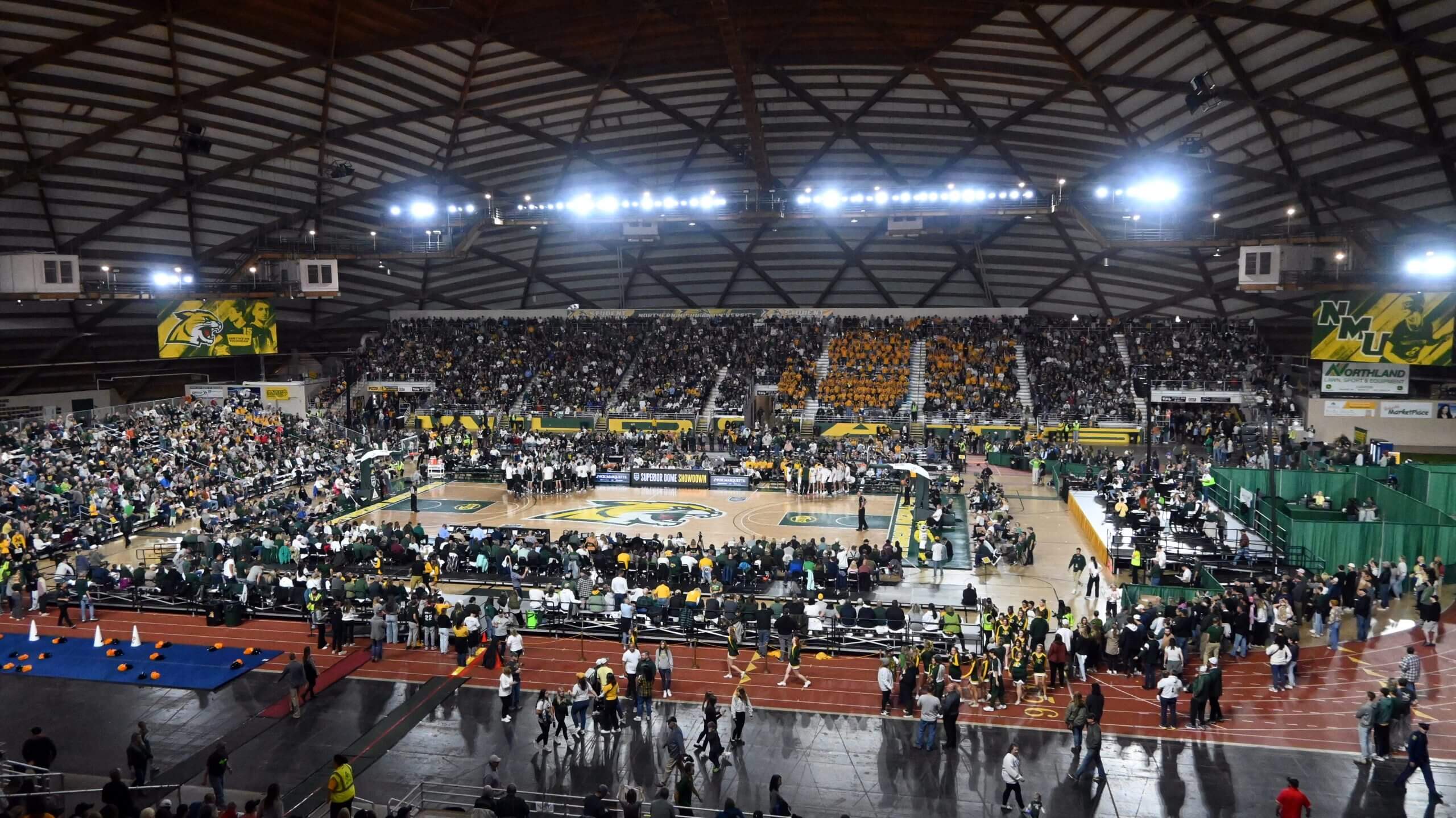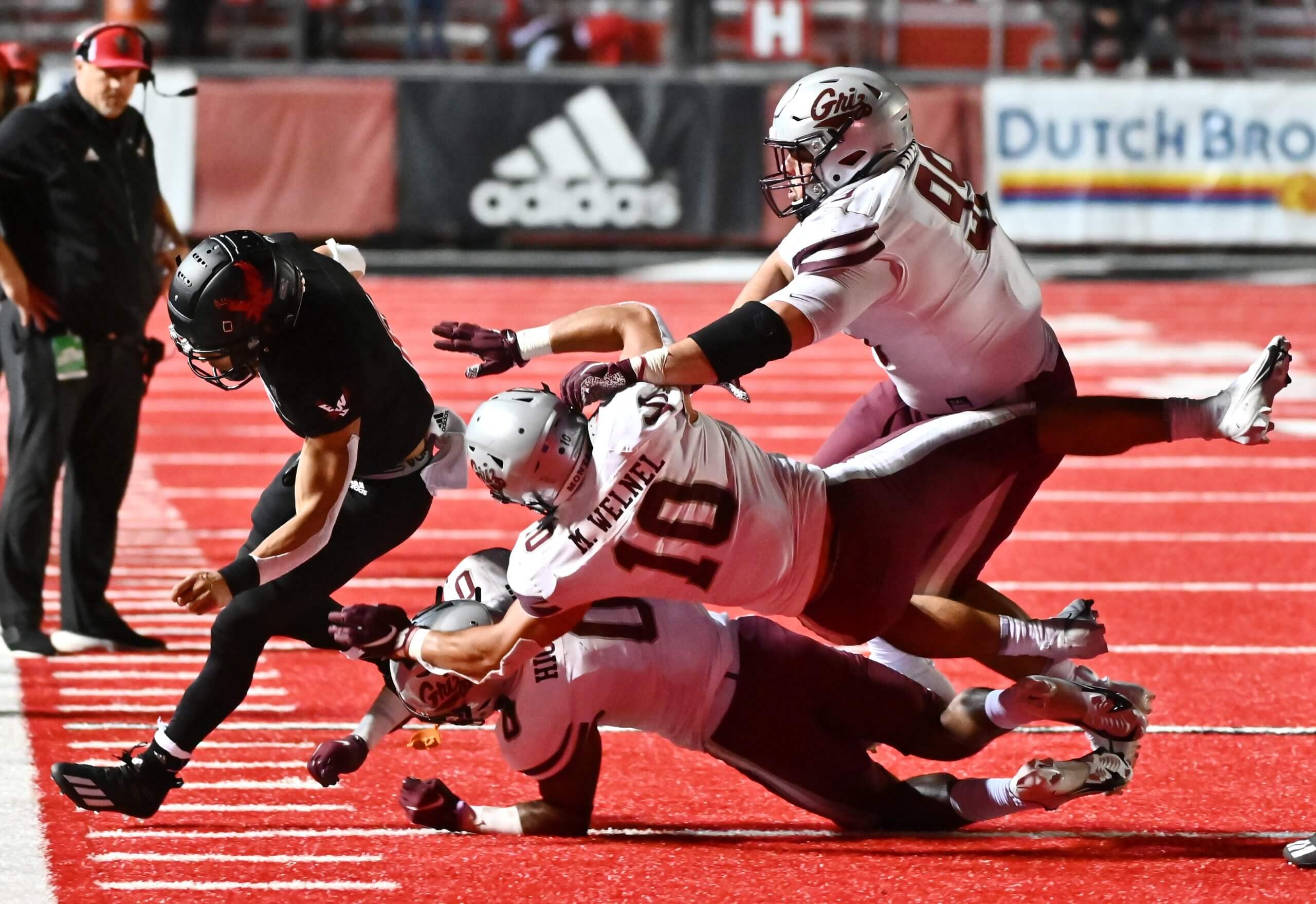On Thursday, Arkansas State lost at home 34-30 to Louisiana in disappointing fashion. The Sun Belt Conference matchup got lots of attention on social media, but it wasn’t the on-field action that had folks excited.
Many discovered for the first time that Centennial Bank Stadium, home of the Red Wolves, features a rock waterfall in the north end zone.
— no context college football (@nocontextcfb) November 21, 2025
In fact, there are two waterfalls, one on each sideline of the north end zone. Added to Centennial Bank Stadium in 2018, Arkansas State said, when announcing renovation plans, that the waterfalls “pay homage to the Natural State with landscape features indigenous to the state of Arkansas.” The water features have light installations that are triggered by an Arkansas State touchdown, while adjoining “celebration fountains” shoot water into the sky.
The waterfalls are among the more unique features of college football stadiums. However, Arkansas State is not alone in its quirkiness. Here are some of the other strange stadium elements found across the country.
Northern Michigan’s wooden dome
Northern Michigan University is located right on Lake Superior in Marquette. As you might imagine, winter weather conditions are brutal. December temperatures average 20 degrees, not factoring in powerful gusts off the lake. That led to the construction of the Superior Dome in 1991 for the Division II Northern Michigan Wildcats. Holding 8,000 permanent seats, the stadium is made entirely out of wood, constructed with 781 Douglas Fir beams and over 108 miles of wood decking. It appears to be a giant bubble from the outside.
The Superior Dome is the largest wooden domed structure in the world and the fifth-largest dome structure. Inside, the dome features a “retractable artificial turf carpet,” which is the largest in the world. Underneath the turf field, there are three basketball courts and a track. In October 2024, the stadium was adapted for a basketball game, as the Wildcats hosted Michigan State in an exhibition contest.

The Superior Dome hosts a Northern Michigan-Michigan State exhibition game. (Drew Kochanny / Imagn Images)
Telescope mirrors made beneath Arizona Stadium
In recent decades, Arizona football has struggled to remain consistently relevant, producing just two seasons with eight or more wins since 2014.
However, paying a visit to the home of football in Tucson is well worth it for other reasons. The manufacturer of the largest telescope mirrors in the world is located underneath the stands of Arizona Stadium. The Richard F. Carris Mirror Lab is currently creating a 27-foot-long mirror for the Giant Magellan Telescope, which will be the largest telescope on Earth. Each mirror produced takes approximately four years to build.
Founder Dr. Roger Angel began developing the special glass technique in the early 1980s, marking the lab’s founding. The mirror lab offers tours, so if the game isn’t interesting enough, fans can pop underground to get a scientific lesson. In theory, at least.
Various turf with alternate coloring
The “Smurf Turf” at Boise State has grown famous over the years, since it was the first college football stadium field to feature a color other than green.
However, many other schools have since put their spin on turf color. FCS Eastern Washington installed a distinctive red turf in 2010, nicknamed “The Inferno.” Seattle Seahawks wide receiver Cooper Kupp spent four seasons playing on that turf with the Eagles. Coastal Carolina features a teal turf at Brooks Stadium, installed in 2015. The Chanticleers call it the “Surf Turf.”
Arguably, the most obscure playing surface can be found just down the road from Arkansas State. At the University of Central Arkansas, Estes Stadium’s field has purple and gray stripes alternating every five yards. The 10,000-seat stadium implemented the odd-looking field in 2011.
Marietta College, a D-III school in Ohio, added a turf field with contrasting shades of gray in 2018. Eastern Michigan also features a gray field. D-III SUNY Morrisville’s field is all black.
In 2009, then-D-II University of New Haven installed a blue field that mirrored Boise State. The Broncos were in the process of registering their blue turf as a trademark at the time. They reached an agreement with New Haven that allowed it to keep its field, as long as it called the field “blue and yellow.” In 2017, D-III Luther College in Iowa became the first D-III program to feature blue turf, after a series of negotiations.

Eastern Washington’s red turf is called “The Inferno.” (James Snook / Imagn Images)
Unique, uh, views at JMU and Missouri State
This fall, it was discovered that James Madison and Missouri State share at least one thing in common. Some fans can get the privilege of watching live game action from the bathroom. At Missouri State, a row of urinals is stationed in front of two large windows, allowing fans to see the end zone and a portion of the field.
URINALS WITH A FIELD VIEW AT MISSOURI STATE pic.twitter.com/pCW91kcvRu
— College Football Campus Tour (@cfbcampustour) October 30, 2025
In Virginia, one has to pay extra for that kind of view. One fan this fall posted a video on social media showing off the view from a JMU suite bathroom. If you fear missing some of the action to head to the restroom, you need not worry at these two venues. You can get a look at the gridiron from anywhere.
Matthew it is real. On the North side suites but you have to have my kind of aura to get into it pic.twitter.com/CCHWsR5hyl
— Richie Goodman (@JMUHater) October 30, 2025
Tennessee’s anthropology department
While this quirk may be a thing of the past, it remains worthy of inclusion. In 1971, the university anthropology department moved into South Stadium Hall. A body donation program was initiated in 1981, and the stadium became a storage facility for skeletons in East Stadium Hall underneath the stands. Neyland Stadium housed the remains of those who volunteered to have them donated to the Forensic Anthropology Center.
More than 2,000 people donated their remains to the project. A stadium that seats more than 101,000 people, the sixth-largest capacity of any stadium in North America, had thousands of skeletons underneath the stands. It’s an eerie thought, but those attending a game in Knoxville can have their fears assuaged.
In 2017, the anthropology department and the remains moved into a new science building. However, there will always be a lot of history in Neyland Stadium.
